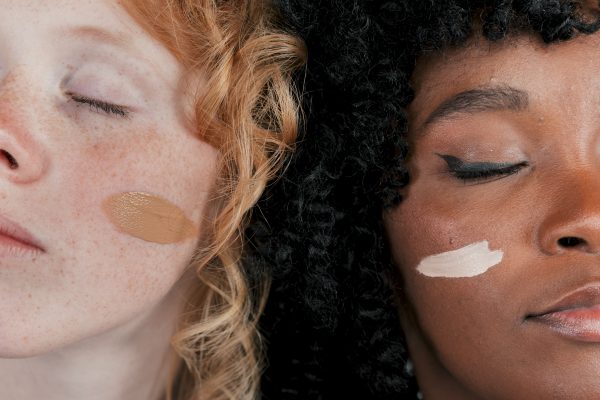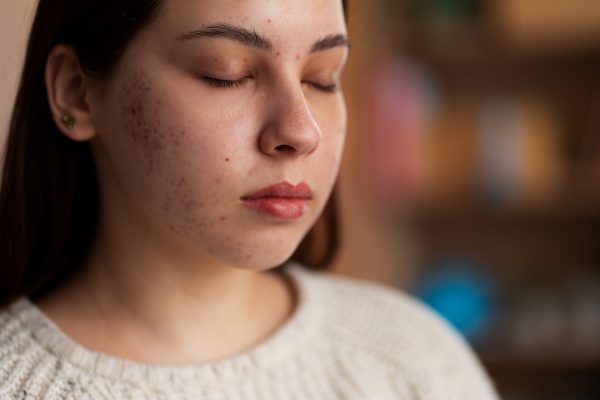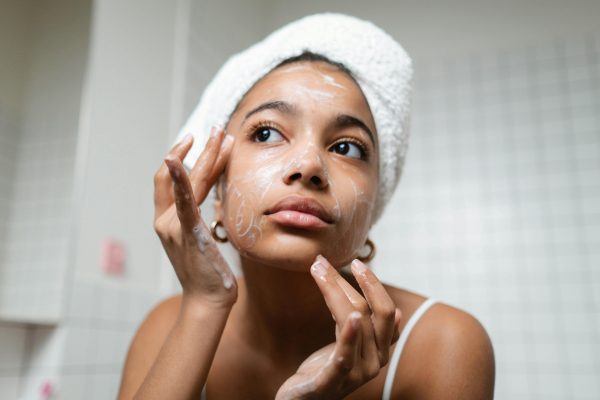
Balancing oily and dry areas on your skin can be a challenge, but with the right skincare routine, you can achieve a healthy, glowing complexion. Knowing your skin’s type is the first step towards achieving your skincare goals. Let’s explore some tips and tricks for combination skin.
What is Combination Skin?
Combination skin is a skin type that exhibits both oily and dry traits. While the T-zone (forehead, nose, and chin) tends to produce excess oil, the cheeks and other areas may experience dryness and flakiness. This imbalance can lead to various skin concerns, including acne, enlarged pores, and uneven texture.
Decoding the Signs of Combination Skin

Identifying combination skin can be straightforward if you notice the following signs mentioned below. With the right skincare routine for combination skin, you can achieve a healthy, glowing complexion.
Oily T-zone:
Does your forehead, nose, and chin seem to be oiler than the rest of your face? That’s a classic sign of combination skin.
Dry cheeks:
While your T-zone might feel oily, your cheeks might feel the opposite. Look for flaky or rough patches, which are signs of dryness.
Enlarged pores:
If your pores are obvious, especially around your nose and forehead, that’s another indicator of combination skin.
Acne:
Breakouts are more common in the oily areas of combination skin.
Uneven texture:
Your skin might feel smooth in some places and rough in others. This uneven skin texture is a common characteristic of combination skin.
A Tailored Skin Care Routine for Combination Skin

A well-structured skincare for combination skin is essential. Here’s a step-by-step guide on how to take care of combination skin and help you achieve a balanced complexion:
1. Gentle Cleansing
-
- Use a mild, sulfate-free cleanser that won’t strip your skin of its natural oils.
-
- Cleanse your face twice daily, morning and evening, to remove dirt, oil, and impurities.
-
- Avoid harsh scrubbing, as it can irritate sensitive skin.
2. Targeted Exfoliation
-
- Exfoliate your skin once or twice a week to remove dead cells and unclog pores.
-
- Opt for a gentle chemical exfoliant with ingredients like alpha-hydroxy acids (AHAs) or beta-hydroxy acids (BHAs).
-
- Avoid physical scrubs, as they can be too harsh for combination skin.
3. Toner Application
-
- Use a hydrating toner to balance your skin’s pH and prep it for the next step.
-
- Look for toners containing ingredients like hyaluronic acid or aloe vera to soothe and moisturise.
4. Serums and Essences
-
- Apply a serum or essence that addresses your specific concerns.
-
- For dull skin, look for products containing vitamin C, niacinamide, or glycolic acid.
-
- For acne-prone skin, consider serums with salicylic acid or tea tree oil.
5. Moistursing
-
- Choose a lightweight, oil-free moisturiser that hydrates without clogging pores.
-
- Look for moisturisers with ingredients like hyaluronic acid, glycerin, or ceramides.
-
- Apply moisturiser to your entire face, focusing on the drier areas.
6. Sun Protection
-
- Protect your skin from harmful UV rays by applying a broad-spectrum sunscreen with SPF 30 or higher.
-
- Reapply sunscreen every two hours, especially if you’re spending time outdoors.
Takeaway
Managing combination skin requires a tailored skincare routine that addresses both oily and dry areas. By following the steps outlined in this guide, you can achieve a balanced, healthy complexion. Remember to be patient and consistent with your skincare regimen. If you have specific concerns or persistent skin issues, consult our expert now!
FAQs Around Skin Care Routine For Combination Skin
1) Is hyaluronic acid good for combination skin?
Yes, hyaluronic acid is generally good for combination skin. It’s a humectant that attracts and retains moisture, helping to hydrate dry areas without clogging pores. This can help balance the oiliness in the T-zone while providing necessary moisture to the drier areas.
2) What combination skin should avoid?
People with combination skin should avoid harsh cleansers, comedogenic ingredients, over-exfoliation, and hot water. Harsh cleansers and hot water can strip the skin of natural oils, leading to dryness. Comedogenic ingredients can clog pores and contribute to acne. Excessive exfoliation can irritate the skin and worsen dryness.
3) What are the best facial treatments for combination skin?
People with combination skin may benefit from facial treatments like chemical peels, hydrating facials, extractions, and LED light therapy. Chemical peels help exfoliate dead skin cells, while hydrating facials provide moisture to dry areas without overwhelming oily areas. Extractions can help reduce acne by removing blackheads and whiteheads. LED light therapy can balance oil production and reduce inflammation. It’s essential to consult with a skincare professional to determine the most suitable treatment based on your individual skin needs.
